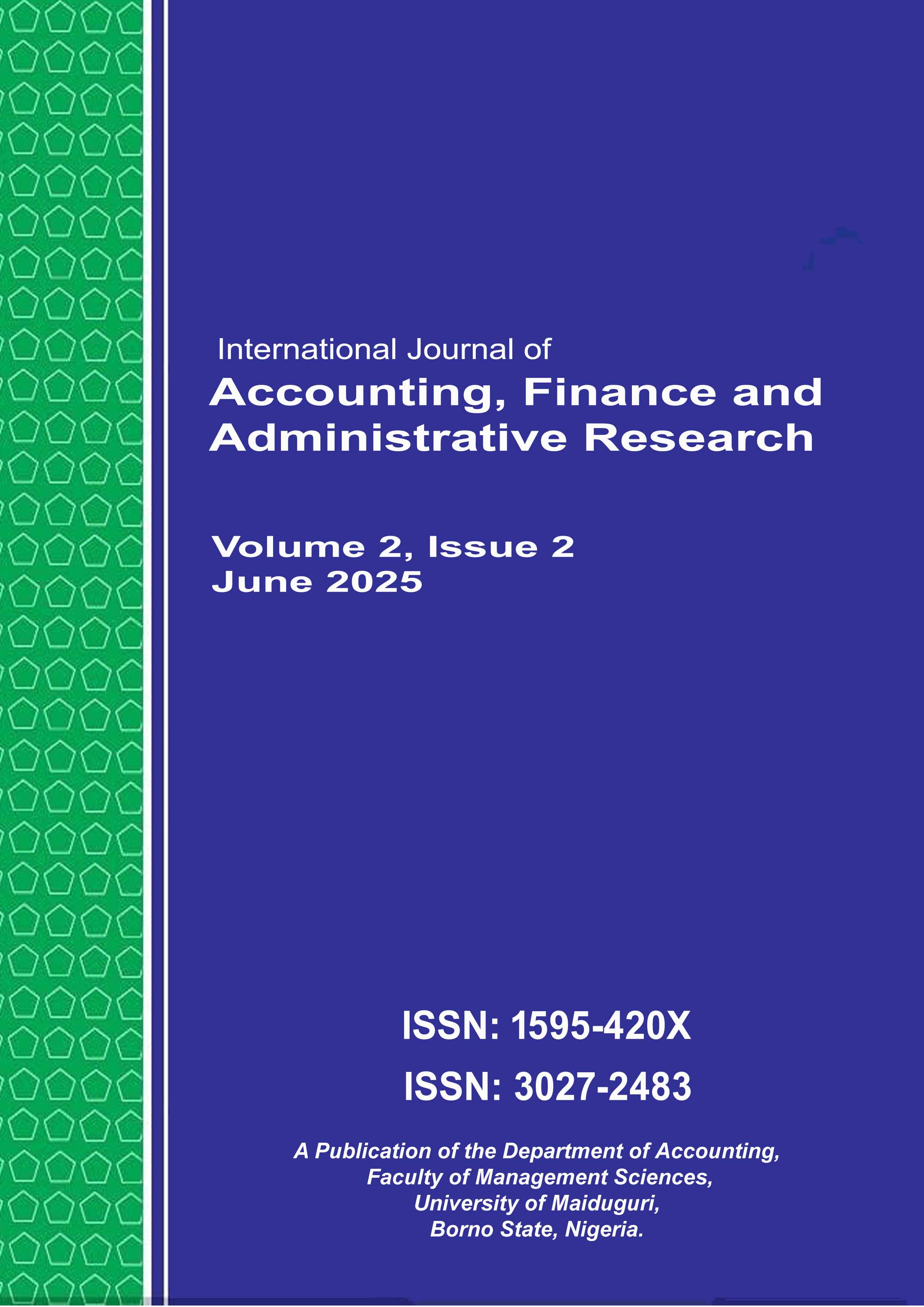Capital Structure and Financial Performance of Listed Oil and Gas Companies in Nigeria
Keywords:
Debt equity ratio, earnings per share, equity to total assets, long term debt to total assets, return on assetsAbstract
Even though capital structure (CS) is central to the financial performance (FP) of any business, particularly in the Nigerian O&G industry, where volatile economic conditions and inefficiencies in the capital market make financing strategies difficult, there seems to be no agreement on its optimal configuration. This study analysed the influence of CS on the FP of O&G firms in Nigeria from 2014 to 2023. Out of nine listed firms, six were sampled. The study used panel data regression and fixed effects models which were validated with the Hausman test alongside Breusch-Pagan test, providing diagnostic results, and result robustness test, to analyse the relationship between the CS components (debt-equity ratio (DER), equity to total assets ratio (ETAR), and long-term debt to total assets ratio (LDTA)), and the financial performance metrics (return on assets (ROA) and earnings per share (EPS)). Results indicated that DER with a coeff = -0.017 and a p-value of 0.018, and LDTA with a coeff = -0.034 and a p-value of 0.027, both possess inverse relationships with ROA, confirming negative and statistically significant associations. On the other hand, the ETAR has a direct significant relationship with ROA (coeff = 0.112 and p-value = 0.009). DER (coeff = -0.128, p-value = 0.022) and LDTA (coeff -0.076, p-value = 0.118) have negative significant and insignificant relationships with EPS, respectively. Conversely, ETAR is directly and significantly linked to EPS (coeff = 0.235, p = 0.015). From the findings, it could be inferred that CS exerts a significant influence on the FP of publicly quoted O&G companies in Nigeria. The study recommended prudent financial risk management and higher use of equity by Nigerian O&G firms to strengthen financial health and benefit shareholders.


